Understanding Adaptive Learning: A Pathway to Independence
Adaptive learning tailors educational experiences to meet the unique needs of children with special needs, fostering their academic growth, independence, and inclusion. This personalized approach integrates technology, therapeutic strategies, and inclusive practices to create supportive learning environments essential for their development and lifelong success.
What is Adaptive Learning and Why It Matters for Children with Special Needs
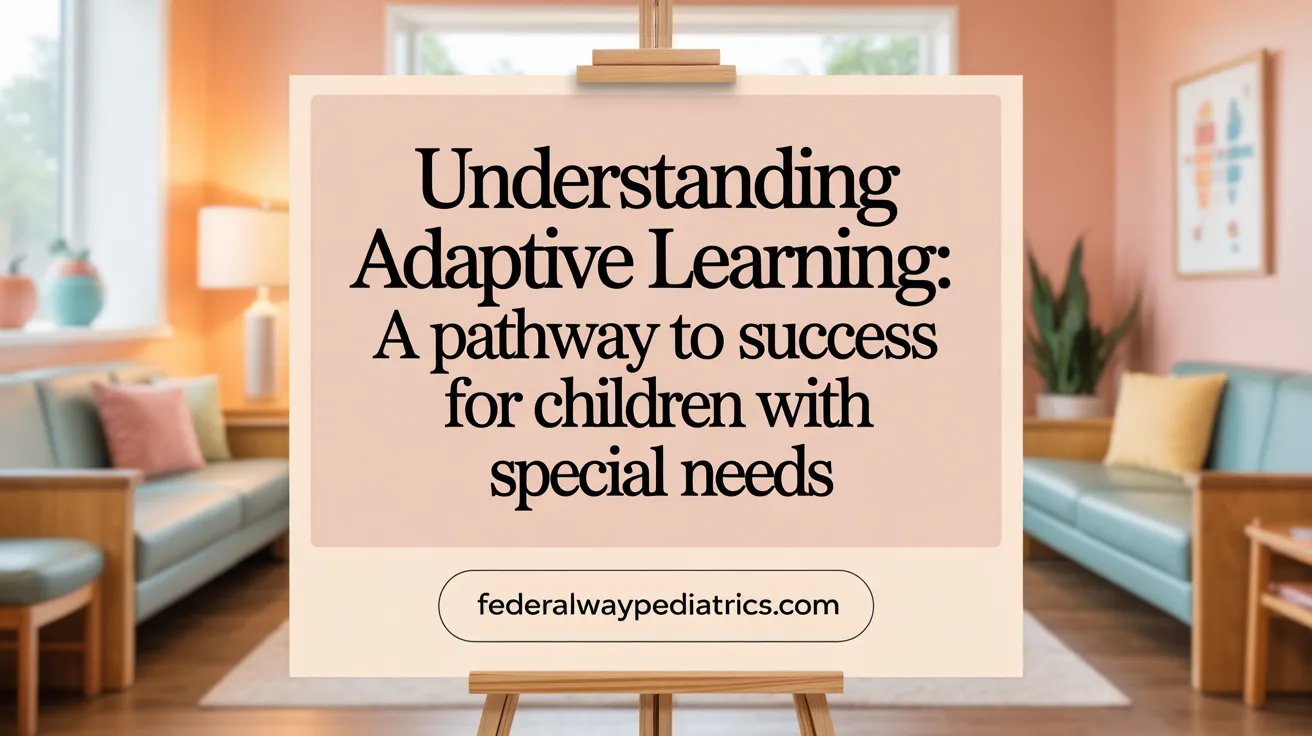
What is adaptive learning and why is it important for children with special needs?
Adaptive learning is an educational approach that customizes instruction to meet the unique needs of each child. It involves adjusting teaching methods, materials, and pacing based on thorough assessments and ongoing data collection. For children with disabilities such as autism, ADHD, or developmental delays, adaptive learning ensures that their individual strengths and challenges are addressed effectively.
This personalized approach uses a variety of strategies, from visual supports and tactile materials to interactive, technology-based tools. For example, visual schedule apps or whisper phones can help children with communication or sensory needs, making learning more accessible and engaging.
By tailoring learning experiences, adaptive learning not only boosts academic performance but also supports the development of essential life skills. As children improve in self-care, social interactions, and functional academic skills, they become more independent and confident.
The incorporation of innovative tools like artificial intelligence, virtual reality simulations, and wearable devices further enhances adaptive learning. These technologies provide dynamic, responsive environments that adapt in real time to a child's progress, fostering motivation and inclusivity.
Ultimately, adaptive learning is vital for helping children with special needs reach their full potential. It promotes inclusion and lifelong development, preparing them for successful community participation and transition into adulthood.
| Aspect | Details | Additional Notes |
|---|---|---|
| Personalization | Tailors curriculum to individual needs | Uses assessments like Vineland or SIB-R |
| Technology | Includes AI, VR, wearables | Provides engaging, responsive experiences |
| Skill Development | Focuses on academic and adaptive skills | Enhances independence and confidence |
| Benefits | Improves engagement, social skills, self-sufficiency | Fosters inclusion and lifelong success |
In summary, adaptive learning for children with special needs is a comprehensive, flexible approach that uses customized strategies and advanced tools to unlock each child's potential, supporting their journey toward independence and community participation.
Effective Strategies and Techniques for Adaptive Learning and Play
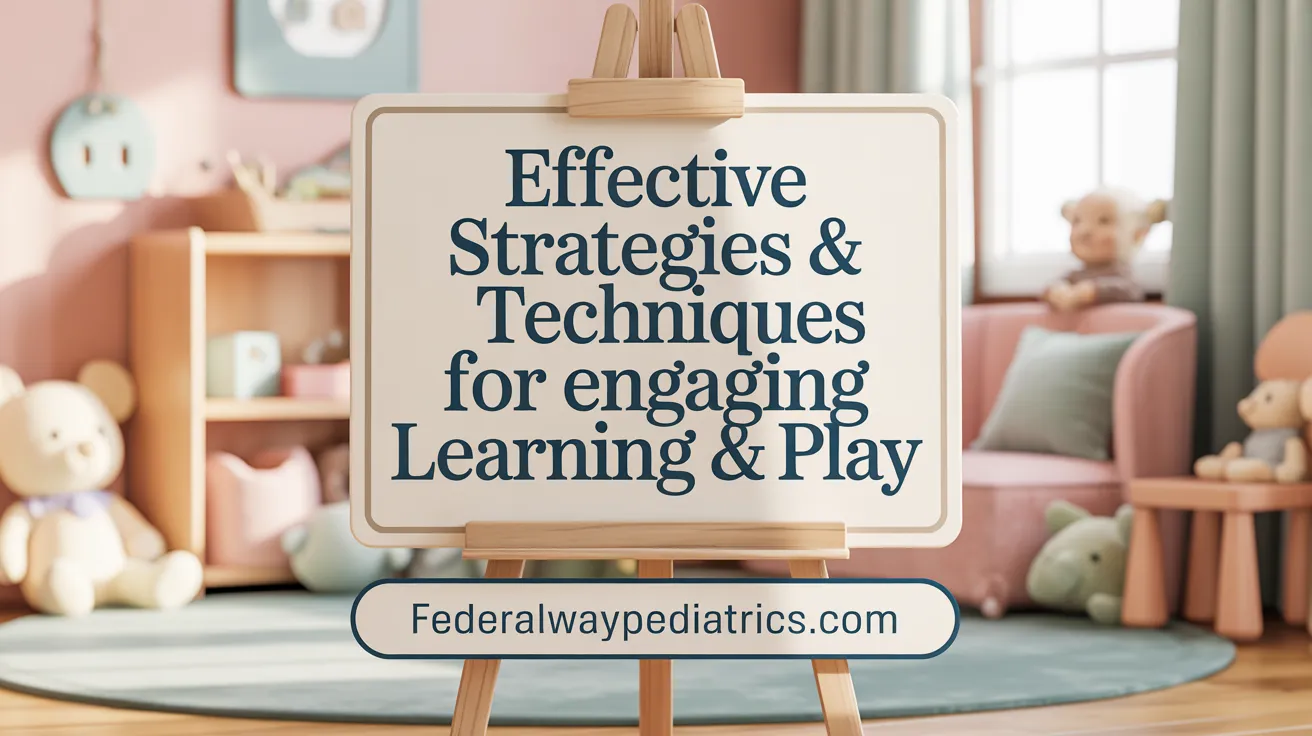
What strategies and techniques can be used to implement adaptive learning and play for children with disabilities?
Implementing effective adaptive learning and play requires a multifaceted approach tailored to each child's unique needs. One fundamental technique is the use of personalized lesson plans that incorporate multisensory activities, which stimulate different senses and help reinforce learning. For example, tactile materials, visual supports, and auditory cues can make lessons more accessible and engaging.
Assistive technologies play a crucial role. Devices such as speech-to-text programs, audiobooks, and custom input tools enable children to participate actively in classroom activities. These tools help bypass specific learning difficulties, allowing children to demonstrate their understanding and skills more effectively.
Play-based learning adaptations are equally important. Using adaptive sports equipment, game-based activities, and social-emotional support strategies encourages motivation and fosters social interaction. Adaptive play activities can include modified puzzles, sensory play stations, or role-playing scenarios that suit various physical and cognitive abilities.
Creating inclusive environments involves applying Universal Design for Learning (UDL) principles, ensuring accessibility for all. Flexible seating arrangements, clear visual layouts, and environmental modifications like quiet zones or sensory-friendly spaces support equitable participation. Teachers can incorporate scaffolding techniques, prompts, and opportunities for repeated practice to support skill development steadily.
Data-driven adaptive systems—such as digital assessment tools—are vital for tracking progress. These systems dynamically adjust the content and difficulty levels based on ongoing performance, ensuring personalized challenges and support.
Successful implementation also requires close collaboration. Educators, specialists such as occupational and physical therapists, families, and community resources should work together to develop and refine strategies. Such teamwork ensures interventions are consistent and meaningful, helping children build essential skills for learning and play in settings that feel welcoming and supportive.
Assistive Technology and Adaptive Tools as Cornerstones of Support
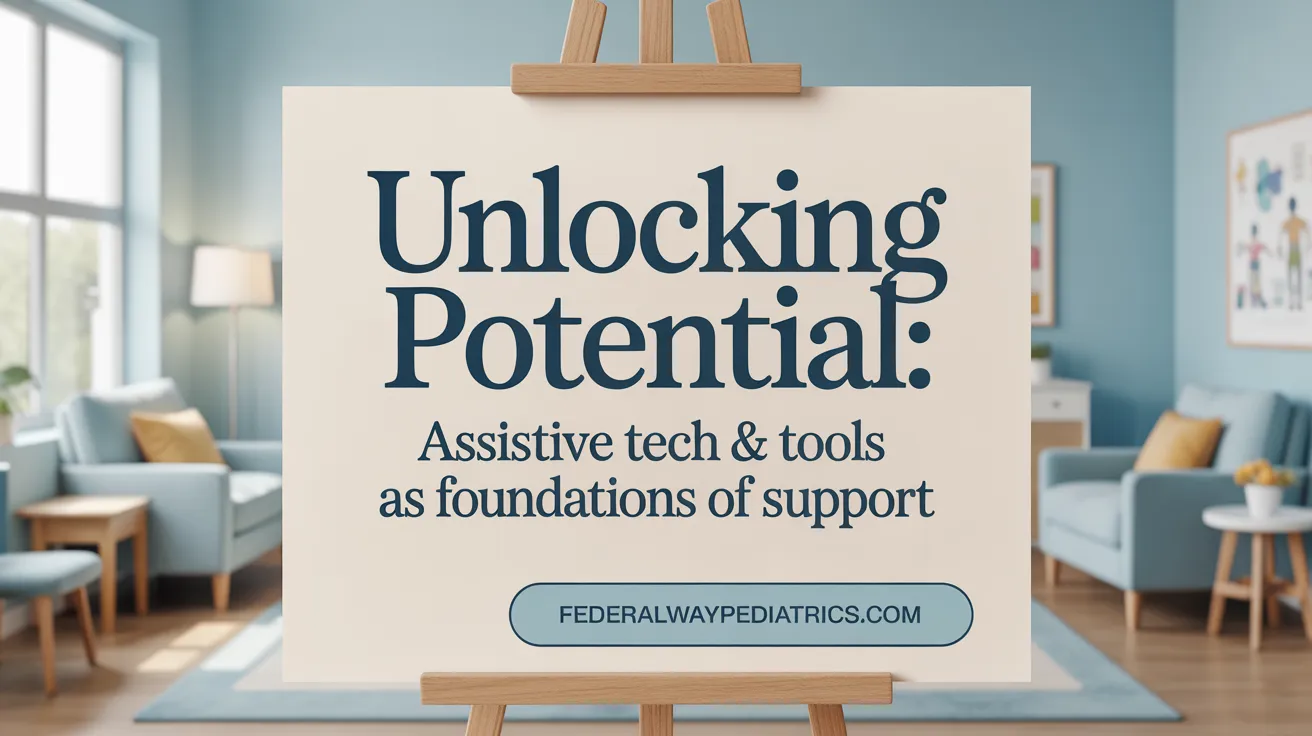
What resources and tools, including assistive technology and adaptive supplies, support adaptive learning for children with special needs?
Children with disabilities benefit from a variety of adaptive tools and technologies that help bridge gaps in learning, communication, and daily functioning. These resources include both low-tech options such as tactile notebooks, visual schedules, sensory toys like Theraputty, weighted teddy bears, and adjustable stands for devices like iPads. These supplies support sensory processing, fine motor skills, and organization.
On the technological front, high-tech devices and software play a significant role. Examples include speech-to-text applications, text-to-speech programs, screen readers, and specialized communication devices like whisper phones. Digital tools such as captioning services, content customization, and voice recognition aid ensure children can access learning materials effectively.
Adaptive supplies like timers, seat cushions, magnifiers, and enlarged workspace materials enable children to overcome sensory, visual, and motor challenges. This comprehensive range of resources is designed to make learning more accessible, boost independence, and promote full participation in educational and everyday activities.
How does the role of specialists and caregivers influence the choice of adaptive tools?
Professionals like occupational and physical therapists, assistive technology specialists, and educators play vital roles in identifying the most appropriate tools for each child's unique needs. Their expertise ensures that chosen devices and supplies align with the child's strengths and areas for growth.
Involving parents and caregivers is equally important. They help facilitate consistency in using adaptive tools at home and in educational settings, providing ongoing support and encouragement. This collaborative approach enhances the effectiveness of adaptive strategies and ensures that the support is personalized.
What are the differences between low-tech and high-tech support options?
Low-tech supports include tangible items such as communication boards, graphic organizers, sensory toys, and magnifiers. These are typically affordable, easy to use, and require minimal training. They are effective for addressing sensory input, visual, and motor challenges.
High-tech solutions involve sophisticated electronic devices and software. These include speech recognition programs, text-to-speech and speech-to-text applications, and specialized communication devices. High-tech tools often provide dynamic, customizable options that can adapt as the child's needs evolve.
Both types of supports are essential, often used together, to maximize accessibility and learning success.
How do adaptive tools improve engagement and accessibility in learning?
Adaptive tools reduce barriers by supporting sensory processing, motor control, and communication. When children can access content in ways suited to their abilities, their engagement and motivation increase.
For example, visual schedules help children understand routines, reducing anxiety and enhancing independence. Sensory toys and weighted items help regulate sensory input, improving focus. Technology like captioned videos makes content accessible for children with hearing impairments and reading difficulties.
By tailoring the environment and learning materials, adaptive tools foster inclusive classroom settings and support children’s emotional and social well-being. This not only benefits individual learners but also promotes inclusive participation and social integration.
| Resources and Tools | Purpose | Examples | Benefits |
|---|---|---|---|
| Low-tech supports | Address sensory, visual, motor challenges | Tactile notebooks, visual schedules, sensory toys | Easy to use, affordable, immediate support |
| High-tech devices | Enhance communication, access content | Speech-to-text, screen readers, communication devices | Dynamic, customizable, promotes independence |
| Digital accessibility tools | Facilitate content engagement | Captioning, content adjustment, voice recognition | Improve comprehension, reduce barriers |
These adaptive measures, guided by specialists and caregivers, are crucial for creating inclusive environments where children with diverse needs can thrive and succeed in their learning journeys.
Developing Life Skills Through Adaptive and Inclusive Activities
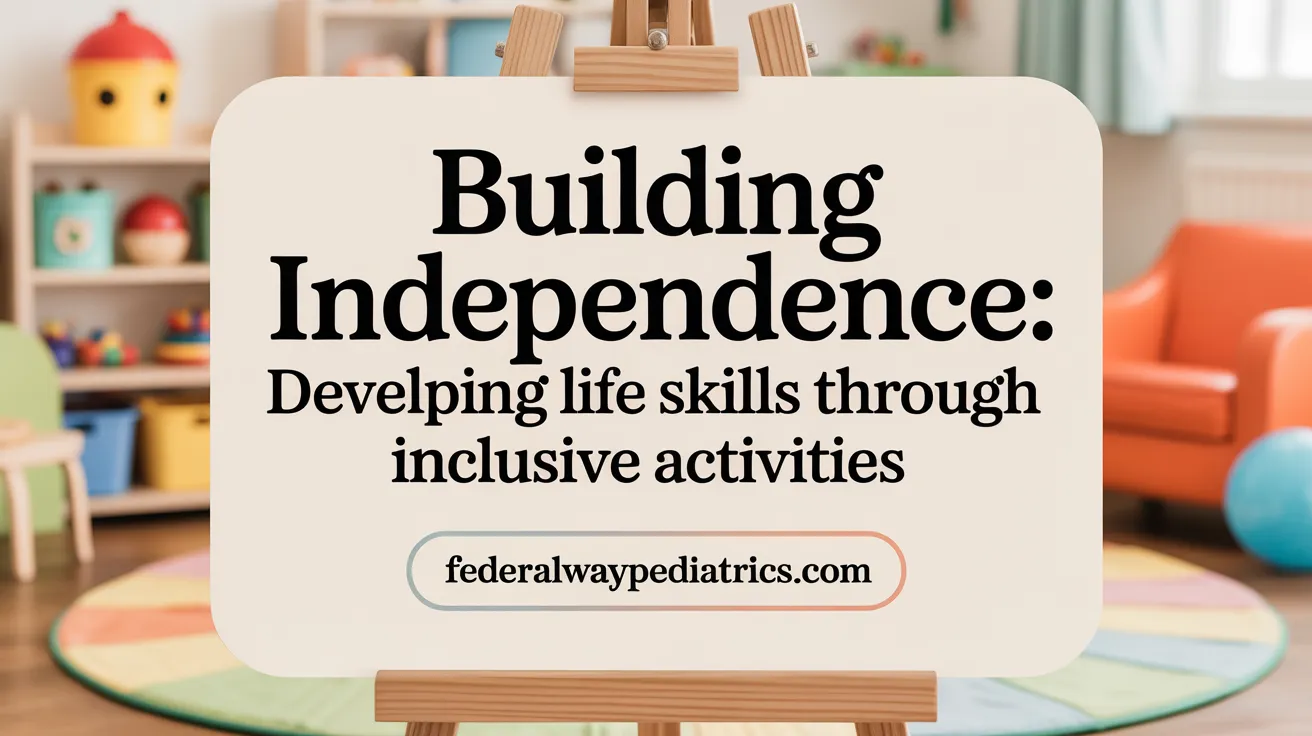
How can adaptive and inclusive activities help develop life skills and functional abilities in children with special needs?
Adaptive and inclusive activities play a crucial role in nurturing essential life skills and functional abilities in children with disabilities. These activities are thoughtfully designed to be accessible and personalized, offering children opportunities to practice vital skills such as communication, self-care, social interaction, and problem-solving in safe and supportive settings.
Through engaging in activities like cooperative games, role-playing scenarios, and social-emotional learning tasks, children can build confidence and independence. These experiences help them develop social skills including empathy, cooperation, and respect for diversity. Creating inclusive environments encourages meaningful peer interactions, allowing children to understand and appreciate differences, which fosters emotional intelligence and a sense of belonging.
In practice, adaptive activities contribute to holistic development by promoting self-sufficiency, boosting emotional resilience, and preparing children for real-world community participation. They also serve as platforms for cultivating a positive attitude towards inclusion and diversity. By integrating these activities into daily routines, caregivers and educators help children develop the skills necessary to navigate their environments confidently and successfully, making a meaningful transition into adulthood and community life.
What are the various categories of adaptive skills?
Adaptive skills are grouped into ten key areas that encompass a child's ability to manage daily life tasks:
| Category | Description | Examples |
|---|---|---|
| Communication | Expressing ideas, needs, and emotions effectively | Verbal, non-verbal, augmentative communication tools |
| Self-care | Managing personal hygiene and daily living tasks | Dressing, grooming, toileting |
| Social Skills | Interacting appropriately with others | Sharing, turn-taking, understanding social cues |
| Self-direction | Making decisions and planning independently | Setting goals, problem-solving |
| Community Use | Navigating public spaces and utilizing community resources | Using transportation, shopping |
| Health and Safety | Understanding personal health and safety precautions | Recognizing hazards, emergency procedures |
| Leisure Skills | Engaging in recreational and leisure activities | Playing games, hobbies |
| Functional Academics | Applying academic skills to real-life situations | Money management, time telling |
| Home or School Living | Managing tasks related to home and school environments | Cooking, cleaning, organizing |
| Work Skills | Skills needed for future employment or volunteer activities | Following instructions, job-related tasks |
What are the social and emotional benefits of developing adaptive skills?
Developing adaptive skills significantly enhances a child's social and emotional well-being. As children master skills such as effective communication and social interactions, they gain self-confidence and a sense of accomplishment. This positive self-perception encourages greater participation in social settings, reduces feelings of frustration or isolation, and promotes emotional resilience.
Furthermore, inclusive activities promote empathy, respect, and understanding among peers, fostering a supportive community where children feel valued. These experiences teach children to manage their emotions, navigate social norms, and develop empathy for others. The resulting emotional stability and social competence lay the foundation for meaningful relationships, successful community involvement, and a sense of belonging.
How can preparation for community integration and adulthood be supported through adaptive skills?
Preparing children with adaptive skills for community integration and adulthood involves targeted interventions that focus on practical, real-world applications. This includes practicing daily routines, developing money management skills, and learning how to access community resources.
Creating opportunities for community-based activities enables children to generalize skills learned in structured settings to real environments. Success stories of adults with disabilities living independently, working, and participating actively in social and community life highlight the importance of early adaptive skill development.
Ongoing assessment and personalized support, combined with family and caregiver involvement, ensure that children gradually acquire the independence required for adult life. These efforts not only foster self-sufficiency but also contribute to improved quality of life, social integration, and lifelong well-being.
Personalization and Accommodations in Inclusive Educational Settings
How can personalization and accommodations in educational settings foster inclusive learning environments for children with special needs?
Personalization and accommodations are essential strategies for creating inclusive classrooms where all students can thrive. Personalization involves customizing instruction and assessments to match each child's unique learning profile. For example, teachers might adapt curricula or use multimodal teaching methods—like visual aids, hands-on activities, or technology-based tools—to match a child's strengths and interests.
Accommodations support students by providing specific resources or adjustments that help them access learning tasks. These could include assistive technologies like speech-recognition programs, visual schedule apps, or tactile learning materials. Extended time on tests, modified assignments, or alternative response formats are additional examples.
Together, these approaches help remove barriers, allowing students with disabilities to participate fully in the learning environment. They promote equitable engagement, foster self-advocacy skills, and help children develop a sense of belonging.
Implementing effective personalization and accommodations requires teamwork. Teachers, specialists like occupational and speech therapists, families, and even the students themselves need to collaborate continuously. This ongoing partnership ensures supports are suitable, flexible, and responsive to the evolving needs of each learner.
In practice, such inclusivity not only benefits students with disabilities but also enriches the educational experience for all by encouraging diversity, empathy, and tailored learning strategies. This approach builds a foundation for meaningful participation and success in both school and future endeavors.
Real-World Applications and Success Stories: Impact of Adaptive Learning
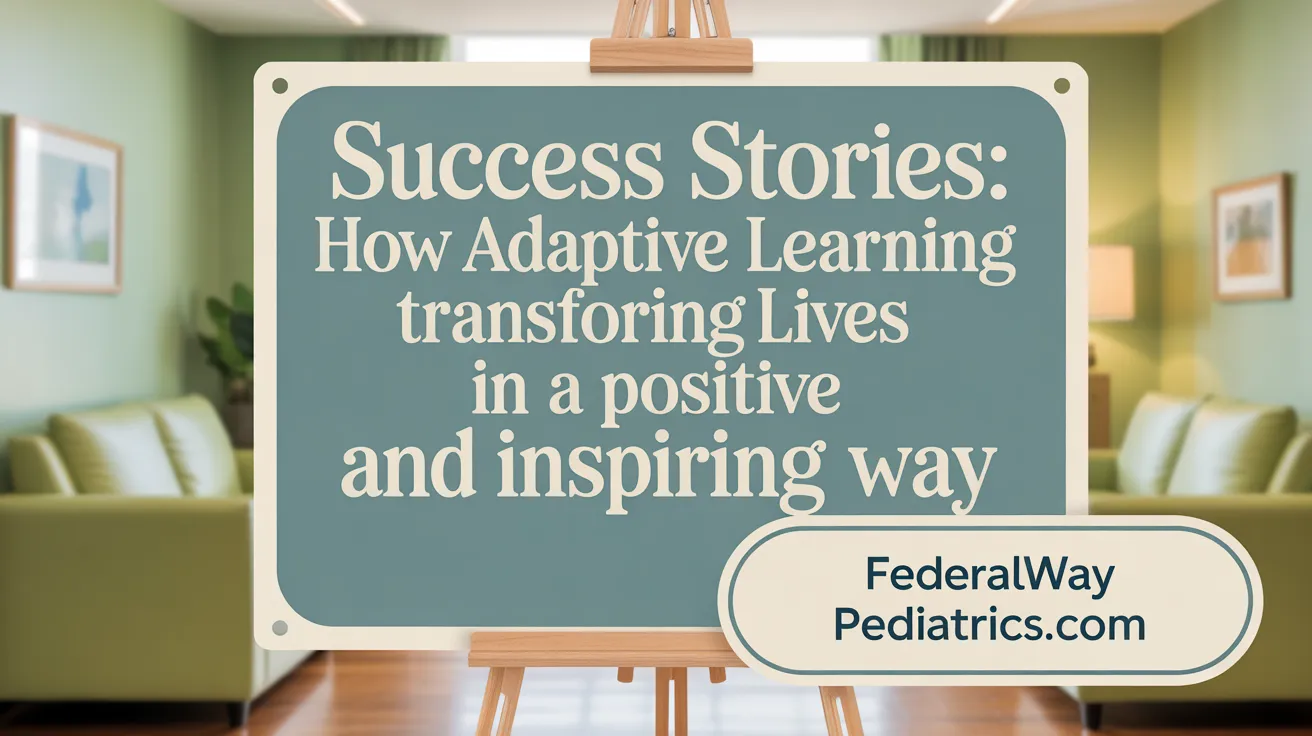
Examples of programs using adaptive learning
Many educational programs are now integrating adaptive tools and techniques to support children with disabilities. For instance, Acellus Academy offers specialized courses with built-in assessment tools to personalize learning, immediately identifying gaps and providing targeted instruction. These programs often utilize technology such as video modeling, computer-based interventions, and AI-driven platforms to cater to individual needs.
Measured outcomes and testimonials
Success stories from these initiatives highlight remarkable improvements in student independence and confidence. Testimonials mention students with conditions like ASD, ADHD, Dyslexia, and speech difficulties excelling in grade-level work, gaining skills for independent living, and experiencing increased motivation and engagement.
Support for diverse disabilities
Adaptive technologies and strategies are effective across a wide spectrum of disabilities. Devices such as audiobooks, speech-recognition programs, and visual schedule apps address specific needs like reading difficulties, organizational skills, and communication challenges. Support from specialists and caregivers ensures the proper use of these tools to maximize benefits.
Academic and social benefits
Developing adaptive skills leads to better academic outcomes and social inclusion. Children learn essential life skills such as self-care, money management, and social interaction. Adaptive play and inclusive classroom practices foster empathy and cooperation, creating more welcoming environments.
Role of assessments in mastery and customization
Assessment scales like the Vineland Adaptive Behavior Scales and the AAMR Adaptive Behavior Scale help identify specific skill gaps. These tools enable educators and therapists to craft tailored support plans. Continuous evaluation ensures students master concepts before progressing, making interventions more effective.
| Program/Tool | Targeted Skills | Notable Outcomes | Supporting Evidence |
|---|---|---|---|
| Acellus Academy | Academic mastery, life skills | Improved grade-level proficiency | Student success stories, mastery assessments |
| Assistive Tech Devices | Reading, organization, communication | Increased independence | Testimonials and research studies |
| Adaptive Play Strategies | Social skills, motor development | Better peer interactions | Observations and parent feedback |
The Future of Adaptive Learning: Innovations and Emerging Trends
How are technological advancements shaping adaptive learning for children with special needs?
Emerging technologies such as artificial intelligence (AI), virtual reality (VR), and wearable devices are revolutionizing adaptive learning. These tools allow for personalized interventions tailored to a child's specific strengths and challenges. For example, VR can create immersive environments that support sensory input and spatial reasoning, making learning more engaging and accessible.
Wearable technology, like sensors and smart devices, can provide real-time feedback on a child's physical responses, promoting self-regulation and emotional regulation strategies. AI-driven platforms analyze data to customize lessons dynamically, ensuring that each student receives instruction suited to their developmental level.
How do personalized learning platforms improve education for students with disabilities?
Personalized platforms utilize algorithms to identify gaps in skills and adapt content accordingly. For instance, tools like Acellus Academy use Vectored Instruction to pinpoint learning gaps during real-time assessments, then deliver targeted lessons. This approach helps students master concepts at their own pace, enhancing confidence and competency.
By integrating immediate feedback and adaptive tasks, these platforms support continuous progress and foster independence. They are crucial for providing equity in education, especially for students with diverse learning profiles.
In what ways do adaptive strategies increase engagement and accessibility?
Adaptive play strategies, assistive technologies, and inclusive design enhance participation by making activities meaningful and suited to individual needs. Modifying sports equipment, simplifying puzzles, or using tactile materials encourage active involvement.
Furthermore, adaptive play promotes social interaction and empathy through group activities, vital for social skill development. Educational tools like whisper phones, visual schedule apps, and electronic math worksheets help children overcome challenges, making learning enjoyable and accessible.
What role do professional development and systemic support play?
Effective implementation of adaptive approaches depends heavily on well-trained educators and continuous professional development. Teachers and support staff need to understand how to utilize assistive technology and adapt curricula effectively.
Addressing systemic issues such as staff shortages, high turnover, and inconsistent application of accommodations is critical. Ongoing training, collaboration, and policy support ensure that inclusive practices are consistently applied across settings.
What challenges and opportunities exist for the future?
While technological innovations hold promise, challenges such as funding, equitable access, and training gaps remain. Ensuring all children benefit from these advances requires systemic commitment and advocacy.
Looking ahead, integrating AI, VR, and wearable tech into mainstream education offers enormous potential to make learning truly inclusive. Embracing Universal Design for Learning (UDL), fostering collaborative teaching models, and investing in the workforce will be essential to realize these benefits for children with special needs.
Summary Table: Trends and Tools in Adaptive Learning for Children with Disabilities
| Technology/Strategy | Application | Benefits | Future Prospects | |-----------------------|--------------|---------|----------------| | | AI Platforms | Real-time data analysis, personalized instruction | Tailored learning, greater independence | Adaptive assessments, predictive analytics | | VR/AR | Sensory immersion, spatial reasoning | Engagement, accessibility for sensory needs | Fully immersive educational environments | | Wearables | Physical activity, emotional regulation | Self-monitoring, responsive interventions | Enhanced sensor-based feedback systems | | Assistive Devices | Communication aids, tactile materials | Support for various disabilities | Integration with AI and smart tech | | Inclusive Design | Adaptive play, accessible classrooms | Increased social participation | Wider adoption of Universal Design in classrooms |
Advances in technology and pedagogical strategies promise to make education more inclusive and engaging for children with special needs. Continued innovation, combined with systemic support and professional development, will shape the future landscape of adaptive learning.
Embracing Adaptive Learning for Empowerment and Inclusion
Adaptive learning for children with special needs represents a transformative approach that personalizes education, integrates supportive technologies, and nurtures essential skills for independence and social connection. As adaptive strategies continue to evolve through innovation and inclusive practices, they hold the promise of removing barriers and fostering environments where all children can thrive academically and socially. Collaboration among educators, specialists, families, and communities remains vital to realizing the full potential of adaptive learning in empowering children, preparing them for meaningful participation in society, and shaping a more inclusive future for all.
References
- Top 35 Adaptive School Supplies for Kids with Disabilities
- The Benefits of Adaptive Skill Development for Individuals ...
- Enhancing Special Needs Education Through Adaptive Play
- Accelerating Learning for Students with Special Needs
- Assistive Technology for Kids with Learning Disabilities
- Adaptive Education for Students with Special Needs in the ...
- The Benefits of Adaptive Skill Development for Individuals ...
- The Importance of Adaptive Learning for Children with ...
- Adaptive Learning
